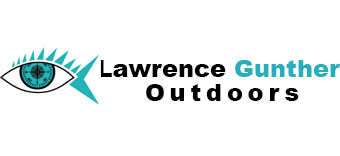
People’s Great Lakes Summit
People of diverse backgrounds, occupations, positions, experiences and histories recently gathered for two days in Toronto for The “People’s Great Lakes Summit”. Over 70 participants representing more than two-dozen organizations collaborated and networked to develop a shared approach on how to restore and protect the Great Lakes.
(Transcript of Lawrence Gunther’s bi-weekly 12-minute segment on Live from Studio 5 broadcast over AMI TV and Audio across Canada)
Q. Welcome back Lawrence, am I safe in assuming that you had a hand in all this?
A. Well, yes, I’ve been one of the advisers on the organizing committee for the past year.
A. This is actually our second Summit of 2017.
Q. The goal of the Summit is quite ambitious, were participants able to reach agreement on what steps need to be taken?
A. While the goal may have been for participants to collaborate on what policy changes are required to ensure water is [protected in the Great Lakes, the real challenge turned out to be far more comprehensive.
A. There was consensus that the current systems aren’t working, and that a totally different approach is needed.
Q. Did the Summit participants reach a conclusion on what this new approach to restoring the Great Lakes should entail?
A. First off, since the term restoration is generally applied to ancient artifacts or deteriorating works of art, participants agreed that pursuing restoration is not the right approach.
Q. If not policy change or restoration, then what is the right approach?
A. Summit participants agreed that it will take a complete re-framing and restructuring of our current systems of water protection.
A. It’s going to involve a complete dismantling of our current water policies and regulations.
Q. What exactly would dismantle our current water governance systems and policies entail?
A. People generally agreed that the current system of laws and regulations isn’t working, and that we need to adopt more of an indigenous-inspired approach to water management
A. But, for any system to work, we first need to walk the talk.
A. The path to healing the Great Lakes needs to start with each of us connecting with water in ways that has become foreign to most of us.
A. Each of us has to establish a personal relationship with the water.
A. Only by creating a connection to the Great Lakes, will we be motivated to adopt this new relationship-based approach to protecting the water.
Q. So the solution is more about people connecting to water then it is about tinkering with government policy and regulations?
A. Exactly, to heal we need to feel connected, and to feel connected we need to be out in the land and water.
A. Connectedness is not something that someone can teach another person, it must be felt, learned and experienced for oneself.
A. Nothing will be accomplished if we only use our heads, and just talk the talk. We need to use our hearts and build, develop and nourish a personal connection.
Q. With so many of us living in cities, how is this possible?
A. While it is easy to feel disconnected in the concrete jungles of urban cities, we must take time to immerse ourselves in the land and water to build our connectedness.
A. We need to step off the cement and into the water to understand and feel what connection truly means.
A. Indigenous teachings tell us that all relationships are reciprocal and in constant motion, and that our relationship with water is no different.
A. Therefore, the solution to protecting the Great Lakes first requires individual and communal relationships with water to shift from neglect, to one of love and gratitude


